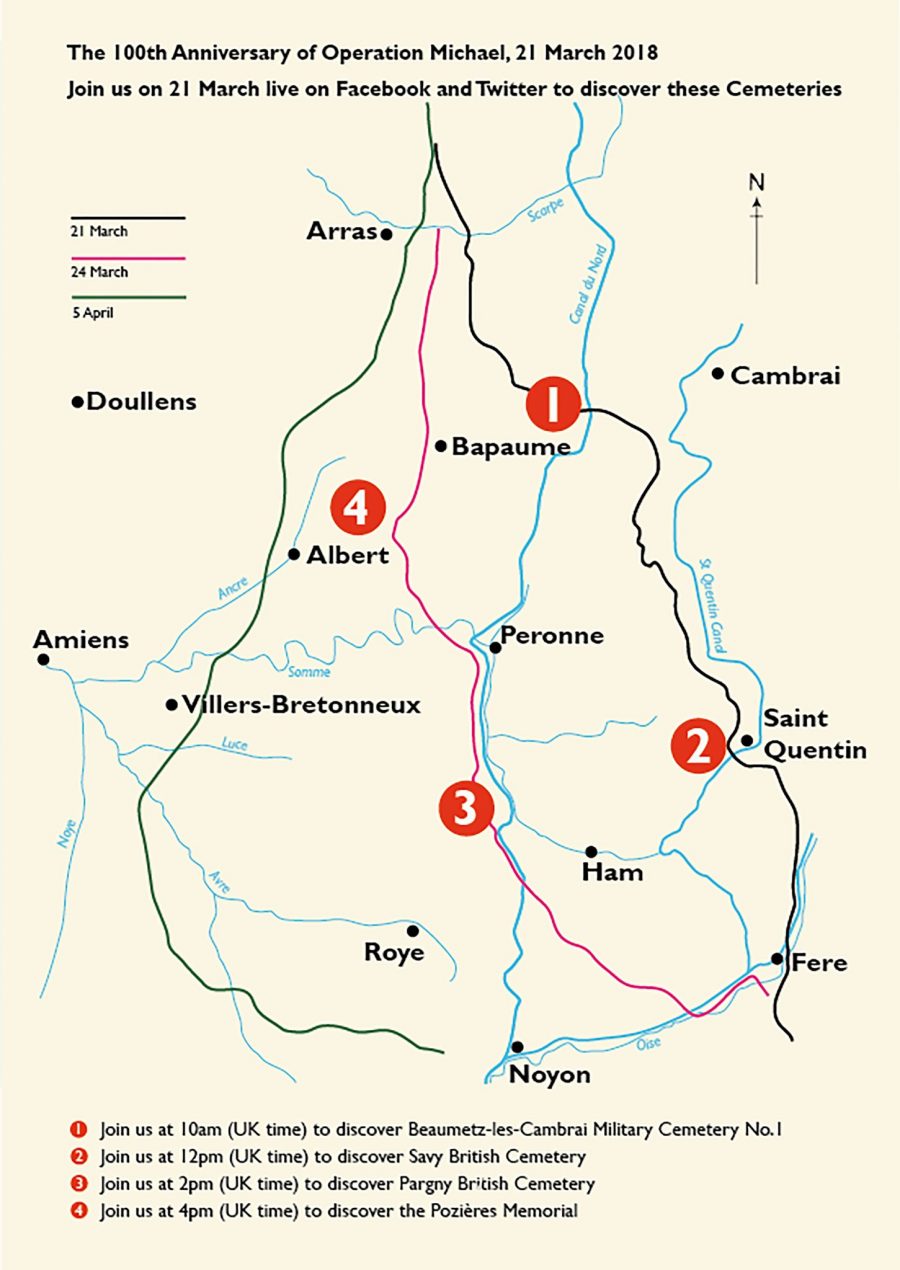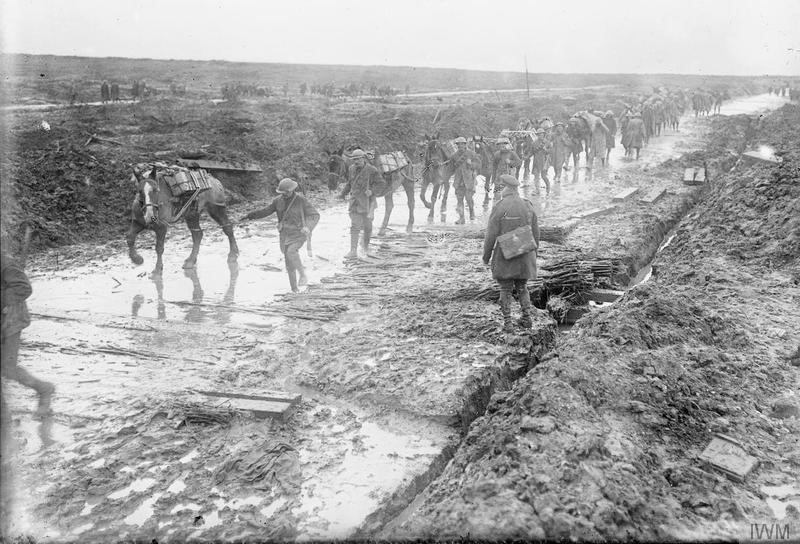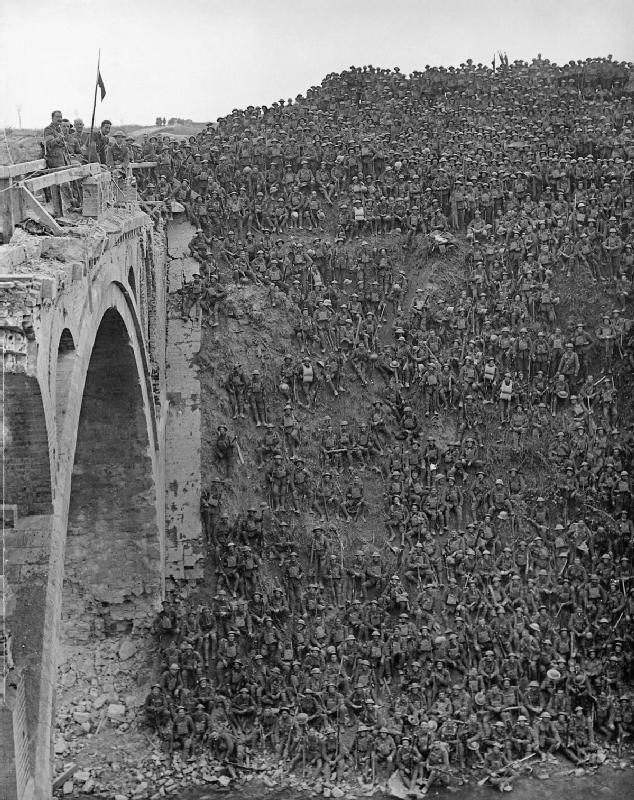German Spring Offensive 1918
March 21st, 1918 was the second worst day for casualties in British Military history; only the first day of the Battle of the Somme had more casualties.
The German army launched its Spring Offensive with Operation Michael. Everyone in the allied trenches new it was coming – but not when – would it come during your six day rotation in the front line. The Germans massed some 65 divisions and more than 6,600 artillery pieces along the 46-mile front from Arras to Le Fère, pivoted on St. Quentin. At first just 26 British divisions were holding the line.
Two men with Tutbury connections died during Operation Michael:
Private Harry Allsop, 19th Btn Northumberland Fusiliers
Died Thursday, 28 March 1918, aged 40
Commemorated on the Pozieres Memorial, France, Remembered on the Tutbury War Memorial
Read War Diaries for the Northumberland Fusiliers
Private Alick Owen, 15th Btn Durham Light Infantry (formerly of the North Staffs)
Died Sunday, 31 March 1918, aged 19
Commemorated on the Pozieres Memorial, France and Remembered in Tutbury Churchyard
Read the War Diaries of the Durham Light Infantry
Details of the men, and the other Fallen from Tutbury, can be read here.
The attack started with a 5-hour artillery barrage in which 3,500,000 shells were fired (over 190 shells every second). By the end of the first day, total British casualties numbered 38,500 with 7,512 dead, 10,000 wounded and almost 21,000 taken prisoner.
(Click on pictures for a larger image)
Operation Michael would last until 5th April. Over the 16 days of the battle in which Harry Allsop and Alick Owen died, some 1,200 square miles of ground was lost, and the Allies had nearly 255,000 casualties (British, British Empire and French). They also lost 1,300 artillery pieces and 200 tanks. All of this could be replaced, either from French and British factories or from American manpower.
German troop losses were 239,000 men, many of them specialist shock-troops (Stoßtruppen) who were irreplaceable. In terms of morale, the initial German jubilation at the successful opening of the offensive soon turned to disappointment, as it became clear that the attack had not achieved decisive results, particularly the failure to take Amiens.
(Click on pictures for a larger image)
Operation Michael was followed by:
Operation Georgette (the Battle of the Lys, 7–29 April 1918); casualties approximately 110,000 (killed, wounded, missing) for both sides.
Operation Blücher–Yorck (Third Battle of the Aisne, 27 May-4 June); again, losses (killed, wounded, missing) were much the same on each side, 137,000 Allied and 130,000 German casualties
Marneschutz-Reims/Friedensturm (Second Battle of the Marne, 15 July-6 August) was the last major German offensive on the Western Front during the First World War. The attack failed when an Allied counter attack by French and American forces, including several hundred tanks, overwhelmed the Germans on their right flank, inflicting s.evere casualties.
Allied casualties (dead or wounded) for the battle were 95,165 French, 16,552 British/British Empire, 12,000 American and 9,000 Italian (nearly 133,000 total). German losses were 139,000 dead or wounded, 29,367 captured
The German defeat at the end of the 2nd Battle of the Marne marked the start of the relentless Allied advance which culminated in the Armistice with Germany about 100 days later.
A major part of the advance was the pivotal Battle of St Quentin Canal, started on 29th September and spearheaded by the 46th (North Midland) Division which included the 137th (Staffordshire) Brigade. The 46th Division assault was considered to be “one of the outstanding feats of arms of the war[1]”.
Recommended:
Film: Journey’s End – based on the play by RC Sheriff – Official Trailer and review
CWGC: Spring Offensive – Operation Michael
Wikipedia: Spring Offensive
Wikipedia: Battle of St. Quentin Canal
[1] Terraine, John (1978). To Win a War: 1918, The Year of Victory. London. ISBN 9780304353217.
Brigadier General J V Campbell addressing troops of the 137th (Staffordshire) Brigade (46th Division) from the Riqueval Bridge over the St Quentin Canal – David McLellan – Q9534 Imperial War Museums


